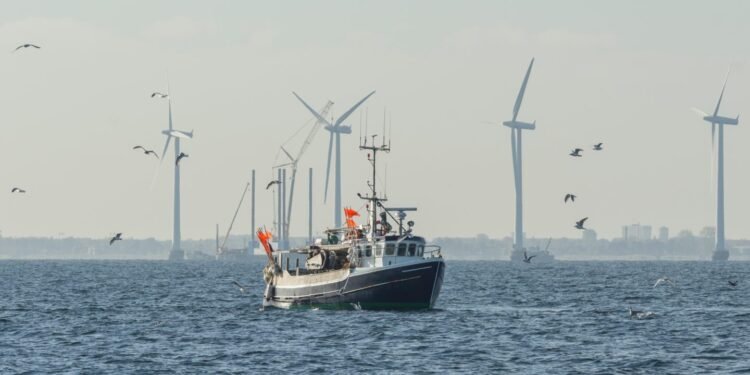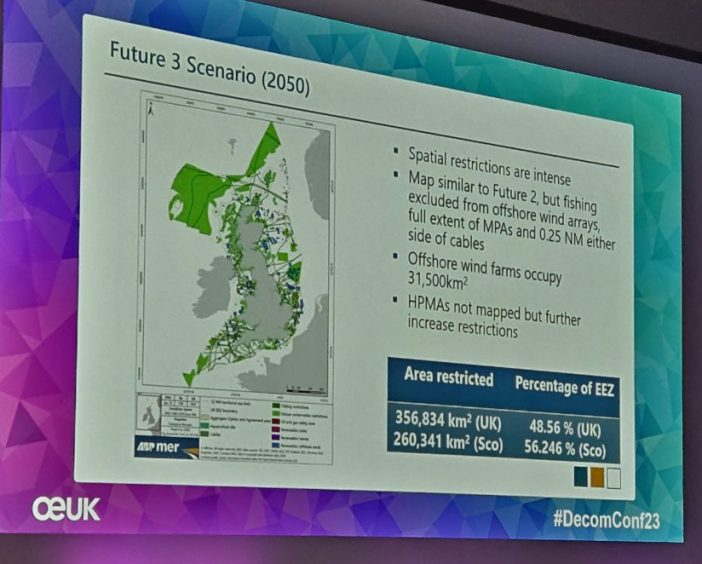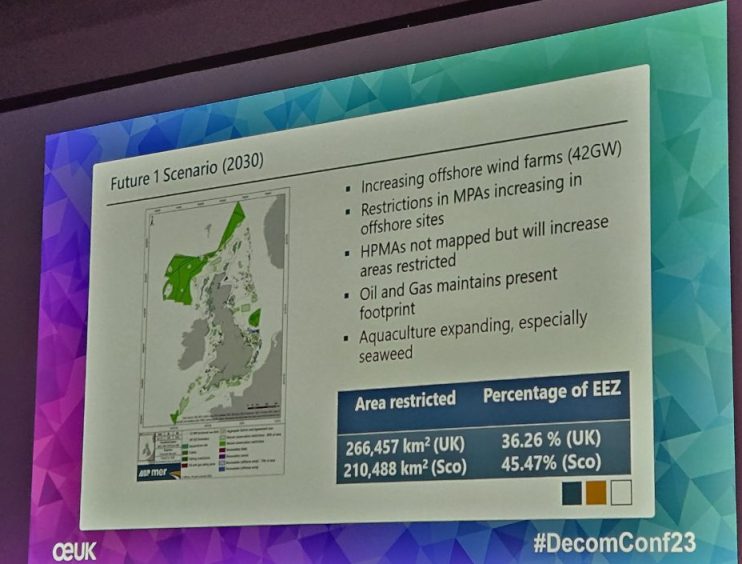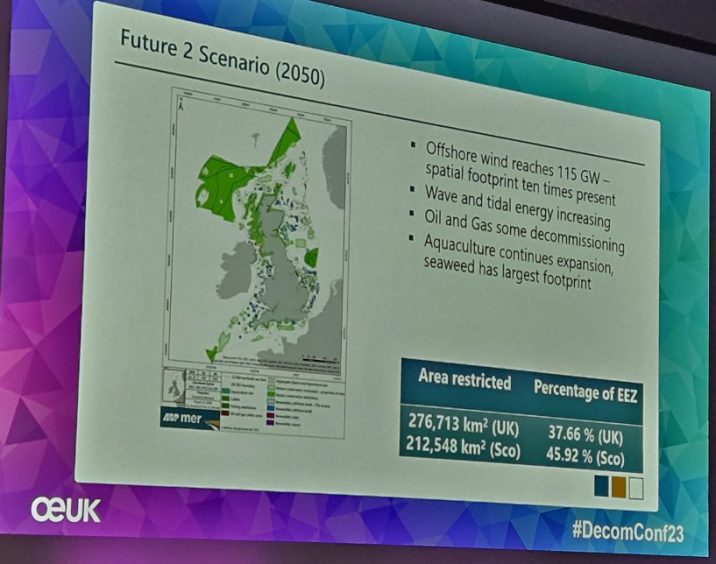More than half of Scottish fishing grounds could be lost by 2050 as offshore renewables ramp up, the leading industry body has warned.
Elspeth MacDonald, CEO of the Scottish Fishermen’s Federation, highlighted “spatial pressures” facing fishing grounds by marine renewables and increased conservation space.
Projections from the group have outlined three future scenarios for the UK’s Exclusive Economic Zone (EEZ) for fisheries, including a “worst case” where 56% of Scottish grounds are lost by 2050, covering more than 260,000 square km.
As soon as 2030, over 45% of the Scottish portion of the EEZ fishing grounds could be lost, warned the SFF, as the green energy sector takes space.
In the high-case 2050 scenario, the biggest contributors to grounds being lost would be offshore wind ramping up to around 115GW and linked restrictions for offshore cables, along with conservation areas,
Speaking at the Offshore Energies UK (OEUK) decom conference in St Andrews this week, Ms MacDonald said the squeeze for space has become an “increasing challenge” for the Scottish fishing sector.
“It’s predicted that by perhaps 2030, getting on for about half of Scotland’s EEZ could either be completely prohibited or restricted from trawling.”
By 2050, she added, the areas returned to fishing through oil and gas decommissioning will be greatly outweighed by the expansion of marine renewables.
Scotland accounts for around 63% of the overall UK EEZ – the envy of many other fishing nations, which was why the EU fought hard to retain access during Brexit.
“Quite self-evident conclusions from that report that we commissioned that displacement of our fishing fleet is a major issue from the look ahead,” she added.
“The impact of displacement is poorly understood, there’s activity going on to try to address that, but of course it is not just the Scottish fleet which would be affected by those spatial pressures, it would be everybody who fishes in our seas.”





 © Supplied by OEUK
© Supplied by OEUK







